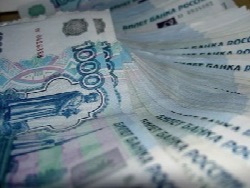
The decision of the European Central Bank to lower interest rates, the extension of the quantitative easing program and the use of new stimulus measures failed to keep the stock markets of Europe from the fall.
ECB President Mario Draghi on Thursday, 10 March, following the next meeting of the governing Council of the ECB announced the reduction of the basic interest rate, interest rates on deposits and loans, “overnight”.
The head of the Central Bank also reported an increase in the monthly volume of redemption of assets, as well as new measures to stimulate lending, inflation and economic growth in the Eurozone.
In particular, we are talking about “the most radical program of lending in the world”, according to the Agency “Reuters”. In fact, the ECB will pay the banks for giving them loans from the Central Bank in the framework of the programme II TLTRO (targeted longer-term refinancing operations), if banks can prove that you have spent the funds raised to increase lending to households and companies.
Various media and experts said, voicing new measures, Mario Draghi thereby pulled out “the Bazooka”, the “big Bazooka”, “mahabhasya” and so on.
It is worth Recalling, when and under what circumstances is the term “Bazooka” in relation to the financial authorities. “Bazooka” (bazooka), colloquial version of the name of manual anti-tank grenade launcher in the U.S. army, at the beginning of the financial crisis was used by the Secretary of the Treasury Henry Paulson. In mid-July 2008 in the framework of hearings in the banking Committee of the U.S. Senate, he said: it is best to reassure the markets, which feared the collapse of mortgage companies Fannie Mae and Freddie Mac, using the statements that the authority will continue the financing of these companies under any circumstances. As a result of such implied warranty is a kind of “Bazooka in your pocket, you don’t need to get”:
“If you have in your pocket a water pistol, you will likely have to get it. If you have a Bazooka in your pocket and people know about it, you probably don’t have to get it”.
A paradox is that after 8 years since the financial crisis in the U.S., the spillover on the rest of the world, the situation in the Eurozone economy reached such a state that the head of the European Central Bank still had “to get the Bazooka out of the pocket of the ECB”.
Starting in January 2016 (previous ECB) Draghi has promised that “the Central Bank will do whatever is necessary to stimulate growth” and so on.
In the end, repeated promises of a new stimulus in a certain sense, played with ECB President Mario Draghi bad joke. News about the “Bazooka shot” not only has failed to improve the mood of the markets – the stock indices of Germany, France, the UK and other European countries have suffered quite significant losses.
In particular, the German DAX 30 fell 2.3 percent (the largest one-day fall since February 24), British FTSE 100 dropped 1.8%, France’s CAC 40 lost 1.7 per cent.
Thus, the initial effect of the announcement of new measures by the ECB were comparable to the not quite successful example of application of another “Bazooka” anti – tank Eryx missile system of French production:
Upon closer examination this situation, however, is hardly the occasion for irony over the actions of one of the leading Central banks of the world.
The fact that the European Central Bank was forced to “get a Bazooka” to apply the new emergency measures, while reducing the forecasts for inflation and growth in Euro area GDP in 2016-2017 (PDF) shows the weakness of the European economy and the seriousness of the situation in the world economy as a whole.
Leading in terms of GDP of a region of the world (total GDP of the 28 countries of the European Union in 2014, according to the Statistical service of the EU, amounted to €13,6 trillion) at present shows near-zero economic growth at very low interest rates and massive money printing by the ECB (which actually are a variety of programs to its asset purchase (or quantitative easing, QE).
In a broader context, we are talking about the fact that the leading Central Bank in the world fired from “bazookas”, and literally knocking his head on the ceiling of their capabilities. Use of emergency and “unconventional” monetary measures cannot in itself resolve the structural problems of the economy.
A number of representatives of the financial establishment of the US (in particular, former fed Chairman Alan Greenspan) have warned about the dubious effectiveness of such measures as negative interest rates.
In early March 2016, analysts of the Bank for international settlements (BIS) noted that there has been a General reduction in the effectiveness of the Central Bank in terms of their real long-term impact on the economy.
“The volatility of financial markets over the past months reflects the increasing representation of investors that Central banks no longer remains any effective options.”
Experts note that in these circumstances to speak of a “Bazooka effect” of new measures by the ECB yet. ING chief economist Carsten Brezski in his comments, Reuters, in particular, stated:
“The ECB actually throws banks money in the hope of increasing lending in the real economy. But it is unlikely there will be any fundamental changes.
The Central Bank cannot force private sector companies to run to banks for new loans. The value of loans and so are quite low. Would it still increase lending? No.”
George Magnus, senior economic adviser at UBS (previously held the position of chief economist of UBS), in his article in Prospect magazine asks: what’s left in the Arsenal of the ECB (in addition to the infamous “Bazooka”).
“Empirical evidence that we have today show that asset purchases programmes of QE lead to an increase in the value of assets that allows the rich to feel richer and banks’ balance sheet look even stronger. Thus, these programs reduce the cost of lending and there is no doubt that the ECB can provide liquidity to banks, which they can use for lending.
However, Central banks cannot force households and businesses to collect debts to increase consumption and investment. Thus, we see the increasing concerns about the fact that the experiment with negative interest rates is counterproductive. Denmark, Switzerland, Sweden and Japan has also used negative interest rate in its monetary policy. Negative rates, according to some estimates, could have a negative impact on banking business models and their yields, as well as on cross-border lending.
It is also quite obvious is the fact that the ECB cannot affect those problems which are causing deflationary trends in the Eurozone. It concerns the free movement of persons, immigration crisis, labor productivity, debt restructuring, public expenditure and reform and the competitiveness of the labor market and services sector. The solution to these issues lies in the area of operational activities of governments and not the ECB.
Is it possible to say that the ECB has now exhausted his Arsenal of possible measures? If the Central Bank will stick to the traditional approach to monetary policy, then Yes. But, while the ECB could theoretically go to more desperate measures. It further can be measures to “throwing money from a helicopter” on the concept of Milton Friedman. The ECB could directly participate in the distribution of money to the households, companies and banks, for example, due to the repurchase of loans from banks, the public debt of States or financing schemes for the distribution of cash in the form of tax credits or investment incentives.
So far, these ideas remain nothing more than a topic for conversation. However, in the future, who knows? If the measures announced today will not lead to the desired effect, and that it is likely that governments will not adopt new programs to support the economy, in the future, the Europeans, one way or another may require more decisive action from the ECB”.








